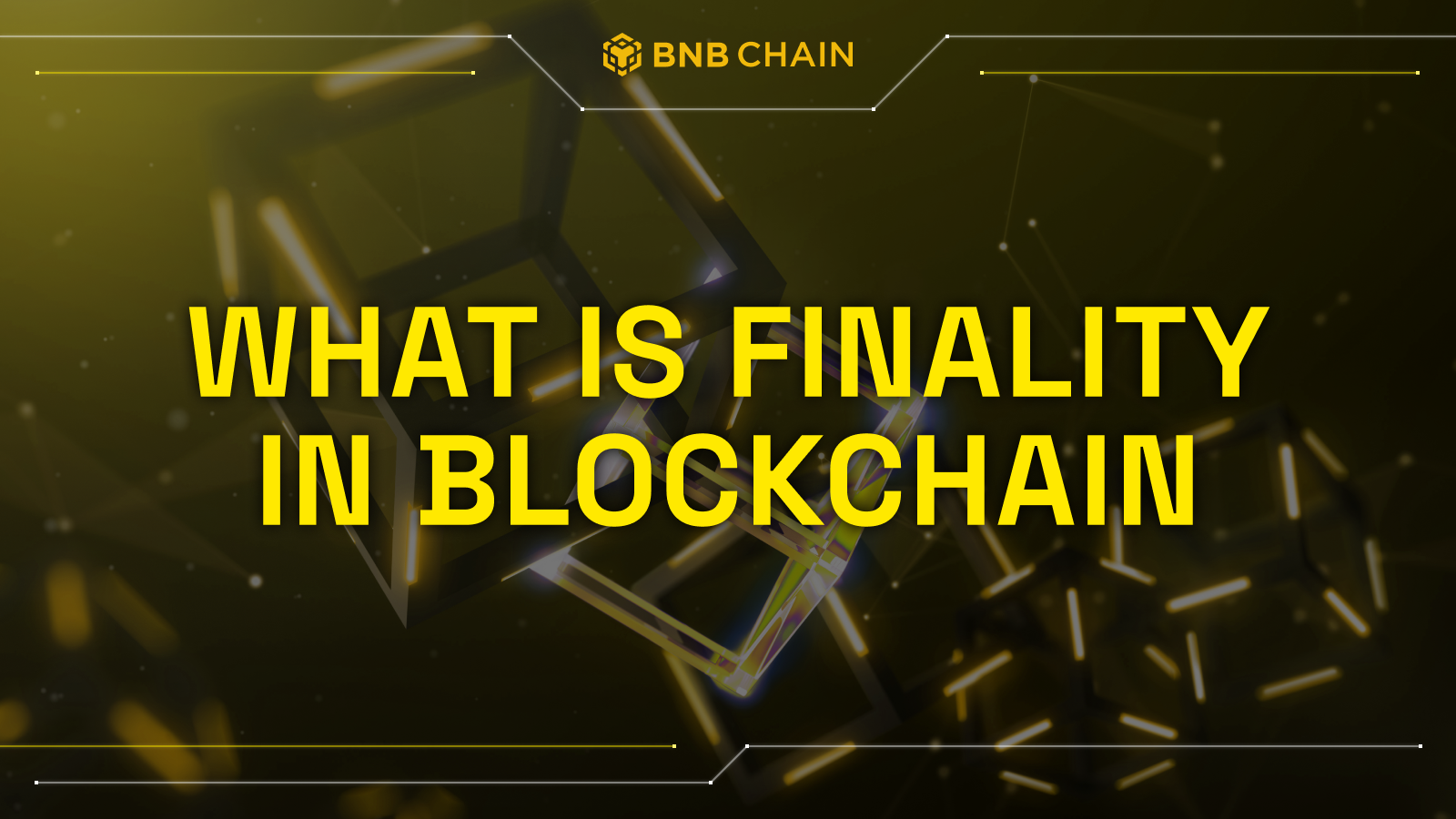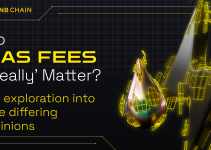Table of Contents

Finality is crucial for both security and efficiency, ensuring that once a transaction is confirmed, it’s irreversible. When it comes to digital assets, finality is critical in preventing protocol-breaking errors such as double-spending.
This blog delves into the nuts and bolts of block finality, exploring its mechanisms, types, and the critical role it plays in preventing double-spending conundrum. We’ll also spotlight BNB Smart Chain’s (BSC) innovative approach to finality, leveraging its Fast Finality feature to elevate transaction processing to a new level of speed and reliability.
What Is Blockchain Finality?
In blockchain systems, finality is the assurance that a transaction is irreversible once confirmed and added to a block in the blockchain network. Once a transaction is deemed final, it can no longer be altered.
Finality is primarily achieved using the blockchain network’s consensus mechanism. Blockchain networks use different consensus mechanisms, each with a unique way of validating transactions and ensuring finality.
While crucial in blockchain consensus protocols, block finality isn’t always immediate. This is because block finality and latency work parallel in blockchain networks. A blockchain’s finality rate is linked to its latency level, which measures the time taken to confirm a transaction. Minimizing latency is crucial when designing an efficient payment system.
Finality and Double Spending
Double-spending is a digital dilemma where a single unit of cryptocurrency is illicitly spent more than once. Imagine being able to spend the same $10 bill at two different stores — that’s the risk double-spending poses in the virtual currency world. The consequence? An individual can essentially “refund” themselves the coins they already spent, undermining the trust and security foundational to digital currencies.
This is why finality is crucial. Once a transaction is recorded on-chain, the digital asset is spent and cannot be used in further transactions. It is also crucial in the functioning of smart contracts. Details related to the agreement between parties are embedded in smart contracts. Finality guarantees that the outcome of these contracts is unalterable.
Finality is also crucial in running dApps, ensuring their activities are trustworthy by guaranteeing that transactions made within these applications are irreversible.
Types of Finality
There are several types of finality with varying degrees of certainty and irreversibility.
Probabilistic Finality
Probabilistic Finality is used by most major public blockchains. These blockchains use consensus mechanisms to reach finality. However, as the name suggests, the consensus is probabilistic, meaning transactions can be reversed through chain reorganization. Chain reorganization occurs when an alternative block or series of blocks replace a valid block.
Instant Finality
Instant Finality is primarily seen in private or permissioned blockchains where a highly trusted group of validators can rapidly confirm and validate transactions, ensuring there is no chance of a reversal once a block has been added. It is generally used in applications requiring quick settlements and high security, such as financial systems and supply-chain management.
Economic Finality
A transaction is considered to have achieved economic finality when reversing it becomes economically unviable. Validators on Proof-of-Stake blockchains must provide a specific amount of cryptocurrency, known as a stake, as collateral. If they approve a fake or malicious transaction, they risk losing their stake, rendering such transactions economically unviable.
To sum up:
| Finality Type | Explanation |
| Probabilistic | Used by most public chains. Finality is achieved by consensus mechanism but could be altered by chain reorg. |
| Instant | Often seen in private or permissioned chains, which have a close and trusted group of validators. |
| Economic | Reversing finality can be economically unviable. |
Blockchain Finality Hurdles
Achieving blockchain finality has its own set of hurdles.
- Network latency: Delays in data communication between nodes, known as network latency, can disrupt the order and validation of transactions. This slowdown in the propagation of transaction information across the blockchain network complicates the finalization process.
- Change in network state: Blockchains can get split into multiple states via forking, creating divergent transaction history versions. This, in turn, destroys finality.
- 51% attacks: A 51% attack happens when an entity gains control of more than 50% of a blockchain network’s computational power, enabling them to manipulate the blockchain by altering transaction histories and potentially allowing double-spending.
- Smart contract vulnerabilities: Flaws in smart contracts can trigger unexpected behaviors, opening doors for malicious actors to exploit these vulnerabilities and potentially reverse transactions, thus undermining the finality.
Addressing these challenges is crucial for ensuring the integrity and reliability of blockchain transactions.
Fast Finality On BNB Smart Chain
BSC introduced Fast Finality with the BEP-126 update, enhancing the blockchain’s efficiency in processing transactions. By integrating Proof-of-Stake Authority (PoSA) with Byzantine Fault Tolerance (BFT) mechanisms, Fast Finality ensures transactions are confirmed swiftly and irrevocably, enhancing the user experience by significantly reducing wait times and improving network throughput.
Originally, BSC only used PoSA, wherein it required around 15 blocks to be finalized, making the finalization times around (15 * 3 seconds =) 45 seconds.
After Fast Finality, BSC will only require an average of 2.5 blocks to finalize a transaction, reducing the finalization time to around 7.5 seconds.
| Bitcoin | Ethereum 1.0 | Ethereum 2.0 | BSC (Before FastFinality) | BSC (After FastFinality) | |
| Finality Type | Probabilistic | Probabilistic | Explicit | Probabilistic | Explicit |
| Expected Finality Time | ~1 hour | ~78 seconds | ~16 minutes | ~45 seconds | ~7.5 second |
Conclusion
Finality is crucial in blockchain, ensuring transactions are irreversible and secure. It prevents issues like double-spending and ensures the reliability of smart contracts and Dapps. BSC enhances this with Fast Finality, combining PoSA and BFT to improve transaction speed and security. This development addresses common blockchain challenges, offering a more efficient and reliable platform for users.


